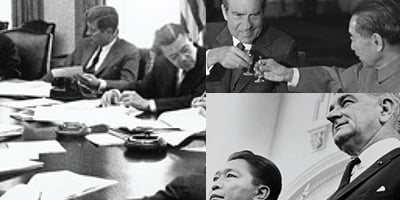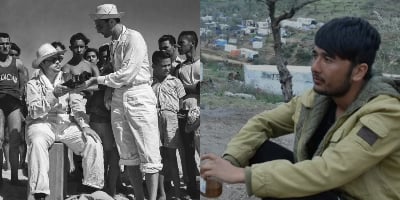USC Shoah 基金会的视觉历史档案是一个全面流式视频集,收集了超过 55,000 份大屠杀和其他危害人类罪的幸存者和证人的主要来源证词。历史是同类档案中规模最大的档案,保存下来,正如生活的人所告诉的,每一个证词都提供了独特的见解和知识,在传统内容中很少提供。绝大多数证词都包含被采访者第一手经历种族灭绝之前、期间和之后的生活完整历史。
视觉历史档案馆提供了多种途径,从历史中学习跨越时间、地点、文化和社会政治环境的目击者。流式处理存档是数字化的、完全可搜索的,并交叉引用机构拥有的 ProQuest 内容。学生、教授、研究人员和其他人可以在证词中检索整个证词和片段,搜索到基于分钟的手动转录、65,000 个关键字索引词、190 万个名称和 719,000 张图片。
Customer Resources
View the Visual History Archive Brochure
Find training and informational resources - including Accessibility
Visit this support page to learn more about the new features and benefits
Video Testimonies
Languages
Using Visual History Archive in Research, Teaching, and Learning
Tel Aviv University
Primary sources are essential for ongoing Holocaust research – an area in which Tel Aviv University has an active and growing research community. The library team have found a way to improve the range and discoverability of their primary sources by partnering with ProQuest to provide access to the USC Shoah Foundation Visual History Archive. This one-of-a-kind collection brings together streaming video testimonies from survivors of and witnesses to the Holocaust and other crimes against humanity.
Read case studyBring Content to Advanced Language Course
Professor Keaveney’s upper-level French course explores themes of love, loss, collective and personal memory, and modernity through readings of French literary texts, theoretical readings, films, poems, and songs. One of the texts used in the class is the French novel Dora Bruder, which tells the story of a young girl who was sent to Auschwitz. The book combines different aspects of memory, loss, life, chronology, and French history, and reconstructs what the girl’s life may have been like, even though very little is known about her.
Read case studyIlluminating Depictions of Wartime Atrocities
Professor Roxworthy’s course Animation, Simulation, and Performance focuses on graphic representations of war, such as comic books, animated films, and video games about World War II and the global war on terror. Students learn how to analyze still and moving images of wartime atrocities, particularly in terms of the impact that different representational media have on the communicative power of these images.
Read case studyFrom the viewpoint of historians, the most important benefit of using testimonies is that they bring into history events that would otherwise remain completely unknown, since they are missing from conventional documentation found in archives—most of which was written by perpetrators and organizers of genocide. Testimonies can save events from oblivion, but they can also provide very different perspectives of events known through conventional documentation.
Omer Bartov, John P. Birkelund, Distinguished Professor of European History and Professor of History and Professor of German Studies, Brown University
Using Visual History Archive for Research, Teaching, and Learning a Varity of Topics
Gender and Identity
The Visual History Archive contains thousands of testimonies discussing topics and issues related to gender and identity. Available searchable terms related to gender and identity lead to exact moments in testimonies where these topics are discussed by many groups of interviewees, including survivors and witnesses of the Holocaust, Rwandan genocide, Armenian Genocide, and other crimes against humanity.
Read moreGeography
The Visual History Archive contains thousands of geographical location terms that span five continents and include historical and existing places, specific forests, mountains, rivers, and lakes, and hundreds of thematic terms related to place, space, and the movement of people. These searchable terms lead to exact moments in testimonies where the topics are discussed, and the VHA infrastructure includes vast geographic metadata, including latitudes and longitudes of all locations.
Read moreLaw
The Visual History Archive contains thousands of testimonies by survivors of genocide attesting to the ways in which legal mechanisms were employed to oppress, divide, and inflict violence upon targeted, marginalized groups. Many of the testimonies also address the legal means used to exact justice in the aftermath of these catastrophic human rights violations, including numerous trials that took place following the Holocaust and other genocides. The searchable terms below, and many others, lead to exact moments in testimonies where the topics are discussed, often accompanied by transcripts and useful metadata.
Read moreMedicine
The Visual History Archive contains thousands of testimonies by survivors of the Holocaust and other genocides discussing lack of medical care, eugenics, medical experimentation, and many related topics relevant to the field of medicine, with searchable terms leading to the exact moments where these themes are discussed. The archive also provides a vast amount of easily searchable, personalized, primary source data relevant to the intersection of medical and Holocaust studies, a burgeoning area of exploration particularly within the field of medical ethics.
Read morePolitical Beliefs, Age, and Social Class
The Visual History Archive contains over 55,000 oral history testimonies of interviewees of diverse age and social class background. More than 250 of these testimonies are by interviewees who were incarcerated by the Nazi regime as political opponents during the Second World War, including members of different political parties in occupied territories and members of resistance movements.
Read moreRace and Ethnicity
The Visual History Archive contains thousands of testimonies discussing topics and issues related to race and ethnicity. Available searchable terms related to these concepts lead to exact moments in testimonies where the topics are discussed by many groups of interviewees, often accompanied by transcripts and useful metadata.
Read moreReligion
The Visual History Archive contains thousands of testimonies by survivors and witnesses of genocide and mass violence attesting to the roles that faith, religion, and religious figures played in their experiences and survival of those events, as well as in their lives after genocide. The archive contains testimonies from members of many different faiths, including Judaism, Christianity, Buddhism, Islam, and others. The searchable terms below, and many others, lead to exact moments in testimonies where the topics are discussed, often accompanied by transcripts and useful metadata.
Read moreRelated Products

专业历史报纸™
阅读更多
数字国家安全档案
阅读更多
Global Issues Library
Global Issues Library reflects the key issues affecting our world today, including border issues, migrations, atrocities and human rights violations, security, revolution and protest, incarceration, disasters, and environmental issues. Through historical and contemporary events found in this database, students and scholars can learn about and contextualize the issues that have transformed the human experience globally.
Read More



